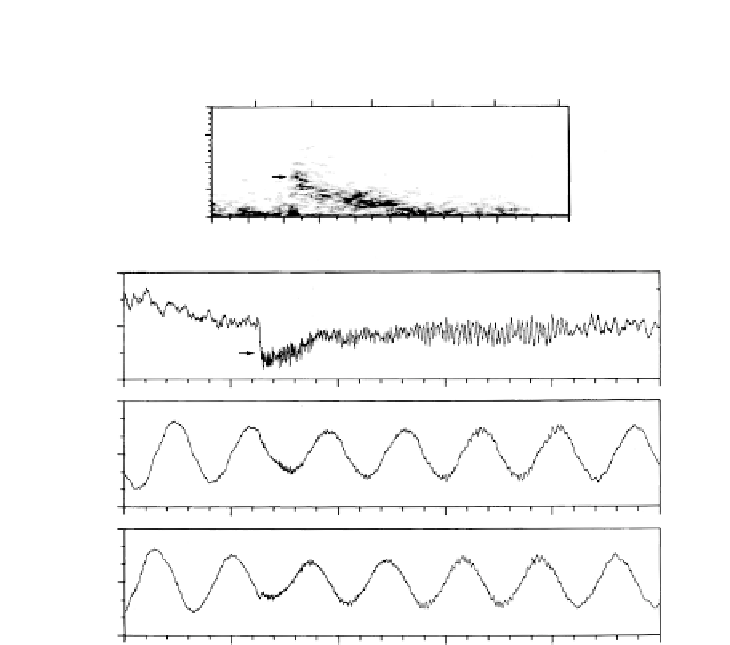Geoscience Reference
In-Depth Information
Primary two -stream waves (Upleg)
March 12, 1983-Punta Lobos, Peru
Altitude (km)
106
108
110
200
150
100
50
0
112s
114s
116s
118s
120s
122s
(W)
10
(E
9
x
2
1E
9
y
2
)
1/2
2V 3 B
0
(E)
2
10
30
E
9
y
0
230
30
E
9
x
0
230
113
114
115
116
117
118
Seconds after launch
Figure 4.30
Electric field observations of what we believe to be pure two-stream waves
for the upleg. The lower panels show the raw dc-coupled data, above which is plotted
the square root of the sum of the squares of these waveforms. The upper panel shows a
sonogram of these waves. (Note the change in scale of the time axis.) An arrow indicates
the onset of the strong burst of primary two-stream waves. [After Pfaff et al. (1987b).
Reproduced with permission of the American Geophysical Union.]
the wavelength of the peak in the instability spectrum is shifted by nearly three
orders of magnitude from the spectral peak due to the large-scale waves found
in the region of the zero-order vertical gradient at a slightly lower altitude.
The waves associated with type 1 irregularities have also been observed at
times other than daytime when the electrical conductivity is reduced by an order
of magnitude. VHF radar observations over Jicamarca during nighttime (Balsley,
1969b) and over Thumla during evening hours (Ravindran and Krishnamurthy,
1997) reveal the presence of such type 1 irregularities. In situ measurements
conducted during early morning hours over Thumla (Gupta, 1986) also reveal
the presence of such irregularities.


Search WWH ::

Custom Search